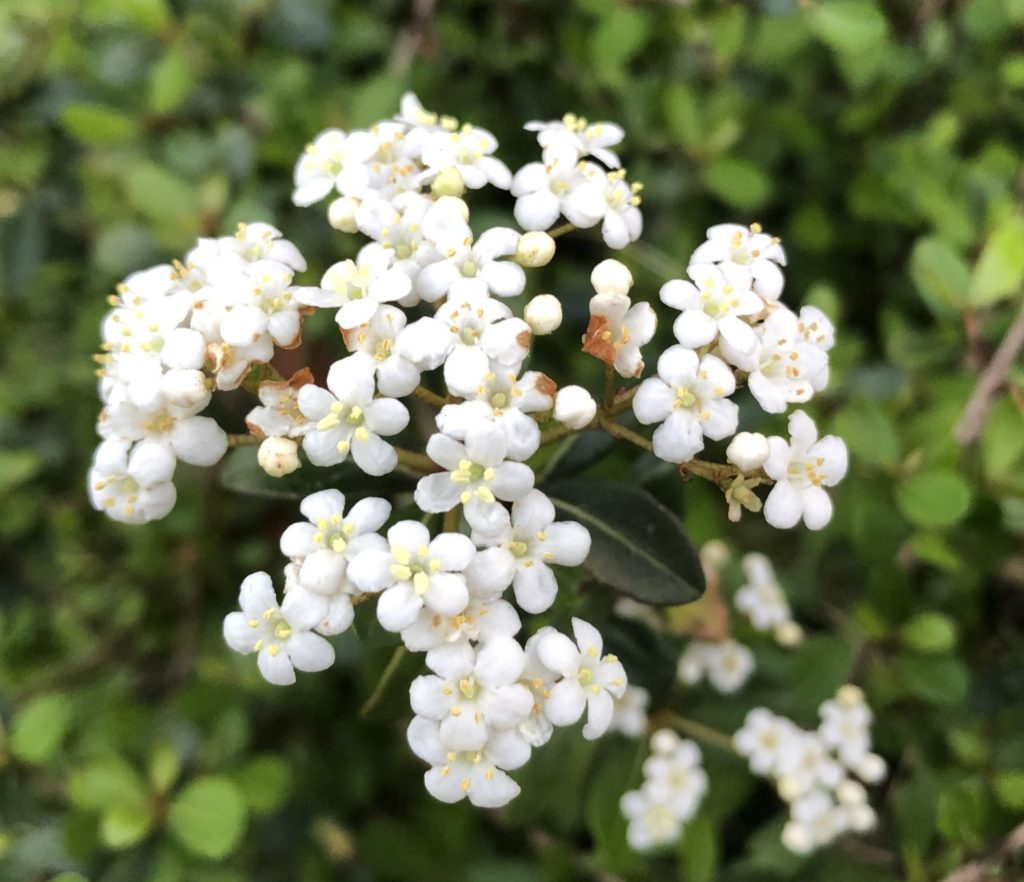A terrific plant is just coming into bloom that is not often used in the landscape and native gardens, though it is an outstanding choice for many conditions. Walter’s Viburnum or Viburnum obovatum, is a native plant to a large portion of the U.S. and deserves more attention and use.

Walter’s Viburnum is a variably sized shrub or small tree named by Thomas Walter (1740-89), an English-born gardener from South Carolina. It has a wide native growing range, from Pennsylvania/Maryland through South Florida and westward up the California coast. This Viburnum has several forms and varieties, all slow growing.
Neat and tidy, Walter’s Viburnum leaves are opposite, 1 to 2.5 inches long and usually evergreen or semi-deciduous, somewhat spoon-shaped with the narrow end attached to the stem. They occasionally have small teeth towards the tip and are bright, shiny, dark, or olive green. The flowers are attractive, pure white, held in rounded clusters called umbels, 1 -2 inches across. Individually, the flowers are 5-petaled, star-shaped, small, appearing in late winter to early spring and last only for a few short weeks. The small fruit, less than 1/3 of an inch across, follows the flowers and is a berry that changes color from green to pink to red to black in the fall.
A variable plant, the common species usually grows 8 to 30 feet tall and 6 to 10 feet wide. However, several compact cultivars (cultivated varieties) are available. These selections are useful in small landscapes, beds, and as layers in hedging around the building foundation. Some cultivars can be pruned as short as 3 to 4 feet for a tight hedge or bed edging.
Walter’s Viburnum is an easy-to-grow, tolerant plant. It will flourish in full sun or part shade. When mature, Walter’s V grows in a wide range of soils from occasionally wet to well-drained. When newly transplanted, water regularly for six months to a year until well established. Though Walter’s V is often found in moist locations when growing in the wild, it has some drought tolerance once it settles in.
Walter’s Viburnum has a fine texture that makes it suitable for shearing into formal hedges and shapes. However, it has a lovely lacy texture when pruned minimally by hand. If a hedge is the goal, choose one of the compact or dwarf varieties; they are a bit slow-growing, making constant pruning unnecessary. Few pests are known to cause these adaptable native plants problems. Walter’s Viburnum may be challenging to find but is worth the effort.
This column first appeared in the Treasure Coast Newspapers.
Leave a Reply